Picipes badius
Scientific name: Picipes badius (Pers.) Zmitr. & Kovalenko.
Derivation of name: Picipes means "black foot" from pici-
meaning "tar" and pes meaning "foot" (stalk); badius means
"reddish-brown" in reference to the color of
the cap.
Synonymy: Royoporus badius (Pers.) A.B. De; Polyporus
badius (Pers.) Schwein.; Polyporus picipes Fr.; Boletus
badius Pers.
Common names: Black-footed polypore.
Phylum: Basidiomycota
Order: Polyporales
Family: Polyporaceae
Occurrence on wood substrate: Saprobic, scattered or in
groups on decaying deciduous wood; August through
December.
Dimensions: Caps 4-20 cm wide; stipes central to eccentric,
1-4 cm long and 3-16 mm thick, black below.
Upper surface: Dark reddish-brown, paler toward margin,
blackish with age; margin thin, wavy, or lobed.
Pore surface: Whitish to pale buff; pores 6-8 per mm.
Edibility: Inedible.
Comments: Large specimens are unmistakable and easy
to identify.
More information at MushroomExpert.com:
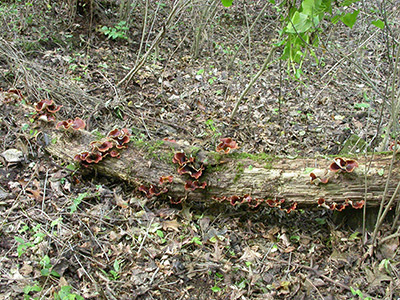
Figure 1. A log covered with specimens of Picipes badius at
Gifford Pinchot State Park in PA. Photo © Gary Emberger.
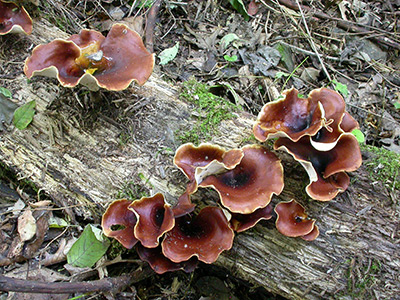
Figure 2.
Close-up of black-footed polypores on the
log in
Figure 1.
The glabrous, azonate, reddish-brown caps are often
darkest in the center. Photo © Gary Emberger.
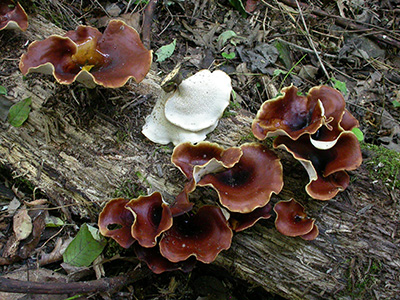
Figure 3.
Same cluster as in Figure 2 but with a couple flipped-over
specimens placed on the log to show the pore surface.
Photo © Gary Emberger.
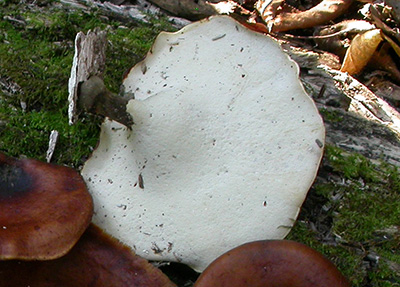
Figure 4.
The dark brown cap and crisp, clean white pore surface
offer a striking contrast. Overholts mentions that the pores are so
small as to be virtually invisible to the unaided eye. Note the black
base of
the stipe.
Photo © Gary Emberger.
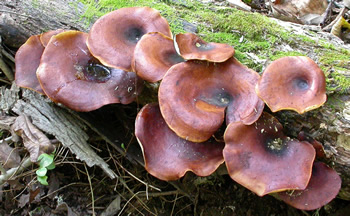
Figure 5. Another cluster of black-footed polypores on a
log in the woods at
Messiah College, PA. These polypores
are distinctive no matter where they oocur.
Photo © Gary Emberger.